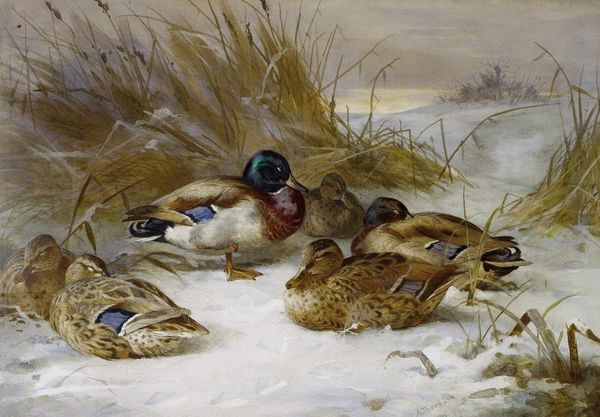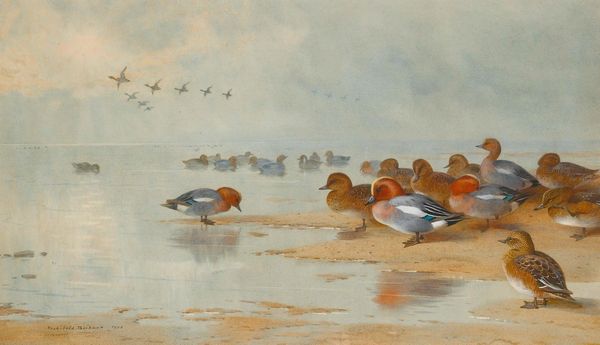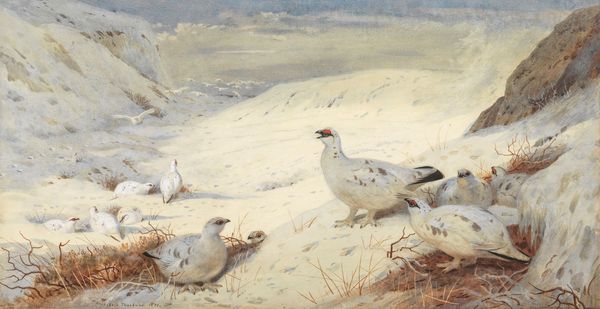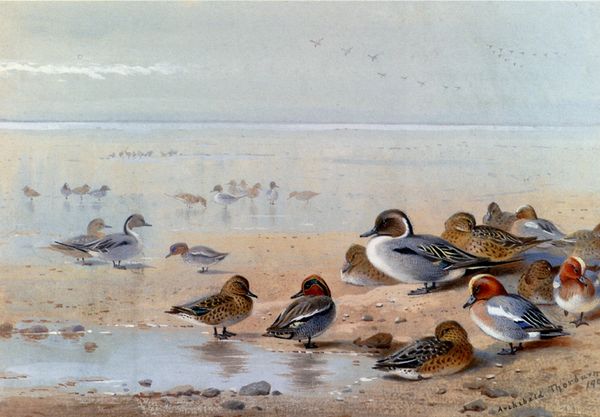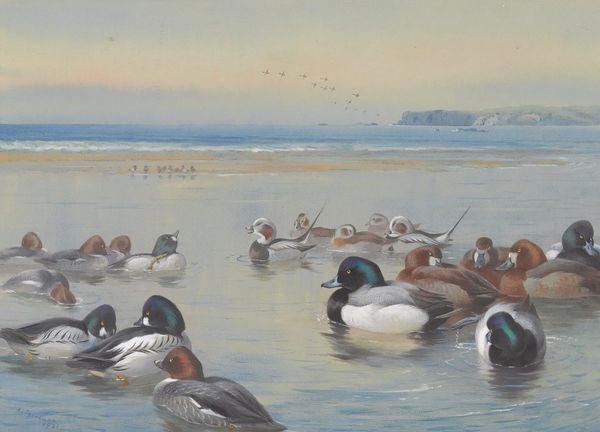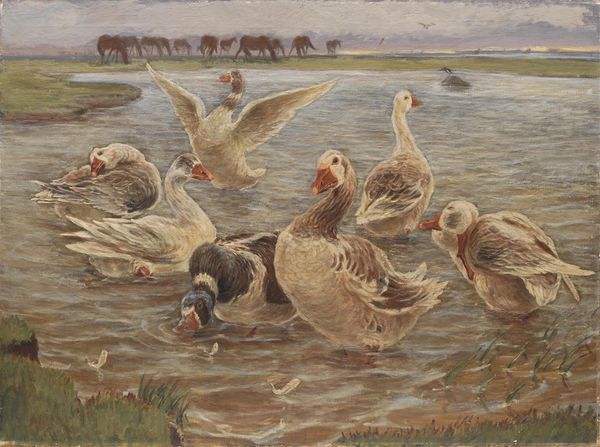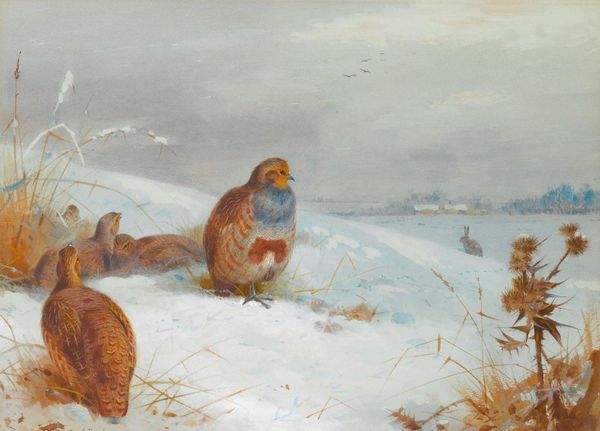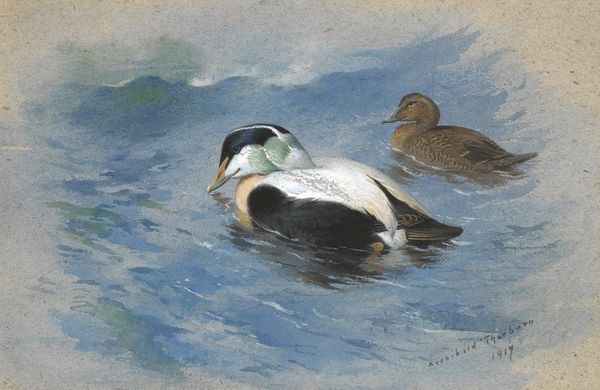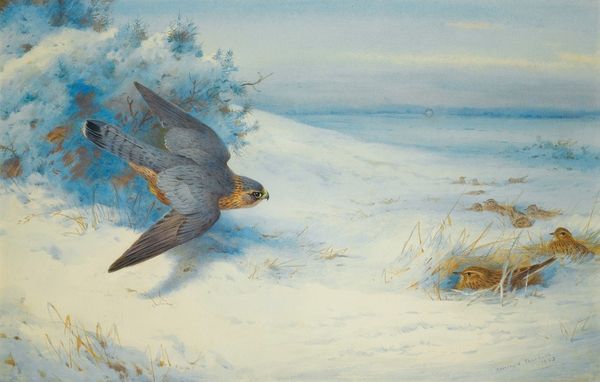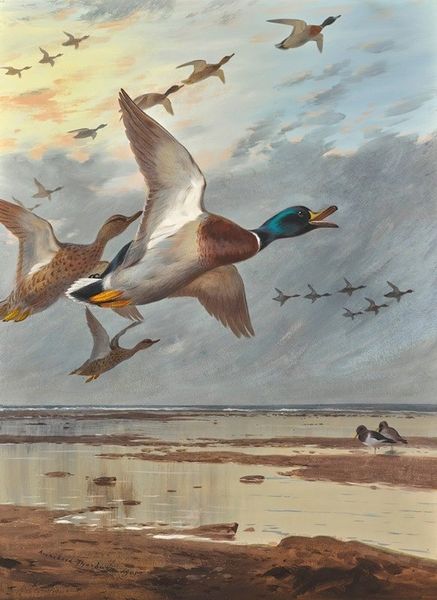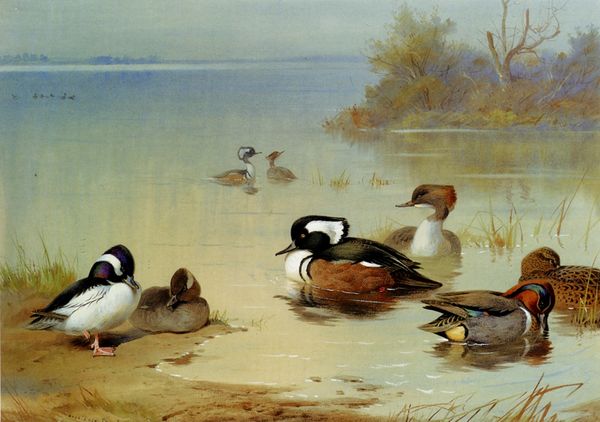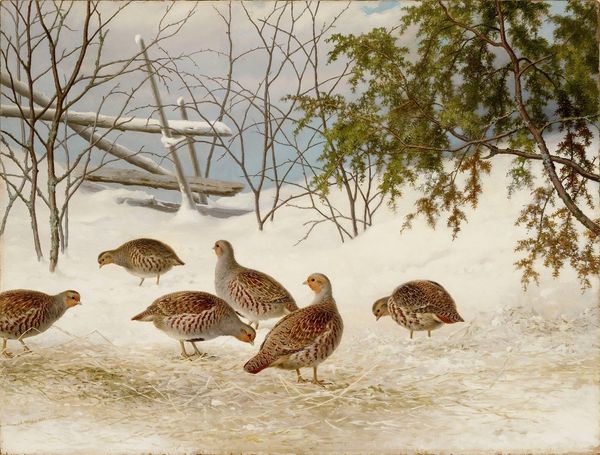
Copyright: Public Domain: Artvee
Editor: Here we have Archibald Thorburn's "Mallard and teal on a snowy marsh," created in 1907. It's mostly watercolour, and it's giving me a real sense of... stillness? Like a very cold, quiet morning. What do you see in this piece? Curator: Stillness is a wonderful way to put it! For me, this piece hums with a specific kind of hushed anticipation, don’t you think? Like the moment just before the world properly wakes up. I’m struck by how Thorburn captures the textures - the feathery softness against the crispness of the snow, all rendered with such delicate precision in watercolour. Notice how he’s arranged the ducks – are they just resting or bracing for something? Editor: That's interesting, that you pick up on the textural contrasts – it does create this sensory experience of cold, almost like you can feel it. Do you think there’s any specific reason he focuses on wildlife, on these mallards in particular? Curator: Thorburn was fascinated by the natural world, particularly birds, which became his life's work. This wasn't just observation, though; there’s a certain… tenderness in his gaze. It’s as though he’s sharing a secret with us, showing us the quiet beauty he found in these creatures' everyday lives. The scene is not idealized, and I am wondering if it represents perhaps his sense of lost innocence and connection to the earth that he so admired? What do you feel when considering it from this perspective? Editor: I guess seeing them huddling like that, it's like we're intruding on a very intimate moment. Curator: Exactly. The privilege of bearing witness is such an emotional concept. We both come away enriched by witnessing and each bring different viewpoints that enlighten the other. Editor: So, what began as seeing a "stillness" has now evolved into a scene pulsating with the potential for impending motion... I love that perspective. Curator: Me too, together it made for a perfect pairing!
Comments
No comments
Be the first to comment and join the conversation on the ultimate creative platform.
